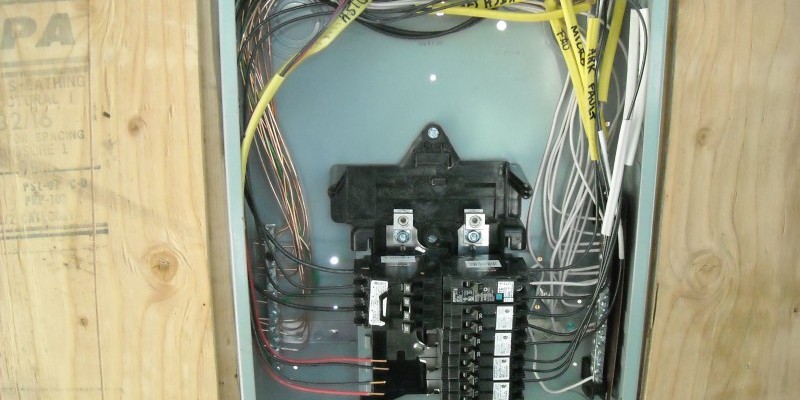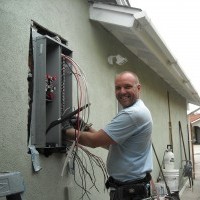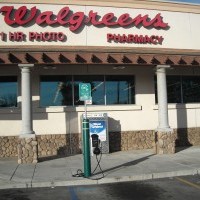
How and Why Electrical Circuit Breakers Trip in Your Home
Date: 04/29/2014
Chances are that if a circuit breaker trips when you turn on or plug in an appliance, you have an electrical overload problem In order to restore the electricity, you have to determine the circuit breaker panel and the tripped breaker, and then reset it. Dealing with a tripped circuit breaker is the the last thing you want to happen when it's dark and cold outside. Circuit breakers are electrical safety devices and by tripping, or breaking the circuit, it is working as designed: protecting lives and property.
Electrical circuit breaker panels are located at the earliest possible point of entry for electricity so that the flow of electricity can be disconnected to all the outlets installed from that point on. Circuit breaker panels consist of two banks of breakers that provide separate protection for the building's electrical circuits. Circuit breakers come in different sizes and are rated according to the amount of electrical current they will allow to pass through them before they overheat and trip off.
Breaker panels can also include Ground Fault Interrupter circuit breakers that protect circuits in the kitchen and bathroom. Ground Fault Interrupt Circuit are now required for electrical circuits that serve kitchen and bathroom circuits where a sudden electrical short circuit has a greater possibility of happening. A good resource for learning more about installing GFCIs in your home is your local building code enforcement office.
Circuit breakers trip whenever the amount of electrical current flowing through them exceeds its design limits. There are only three working parts inside a breaker: a bimetallic strip, a spring, and a set of contacts. The bi-metal strip will hold the contacts together as long as the flow of electrical current remains within safe levels. As long as the current flow remains at or below the breaker's rated current level, the strip won't bend and the contacts remain together. If the current flow is sufficient to cause the bi-metal strip to heat up and bend, the breaker trips and the contacts are pulled apart by the force of the spring thereby stopping the flow of electricity.
Without the intense flow of current, the bi-metal strip cools and resumes its curved form. You can now reset the breaker and return power to the circuit. If you don't know which circuit breaker has tripped off, just look for a toggle being out of position or a red indicator appearing in a small window on the breaker itself.
GFI outlets and circuit breakers are now mandated by the National Electric Code and local building codes. You should check with your local building code enforcement office for additional requirements. It's a good idea to occasionally test your GFIs by pressing the test switch located on the front. It should click off immediately, indicating proper functioning. You can then press the reset switch to turn it on again.
Circuit breakers and GFI devices are the first line of defense against electrical shock and fire prevention in the home and workplace. These devices are there to protect you and save lives and must never be bypassed or tampered with. Breakers are designed to rigid safety specifications and rigorously tested for proper operation. If you are experiencing trouble due to a Breaker that won't stay on, you should have the breaker and the electrical wiring inspected for problems.
Thank you for taking the time to read my article it is greatly appreciated. Try searching through my other articles at Practical Repairs.com. It was easy wasn't it?
ARTICLE SOURCE: http://www.articlesbase.com/diy-articles/how-and-why-electrical-circuit-breakers-trip-in-your-home-1452307.html
AUTHOR: Kyle Issac











